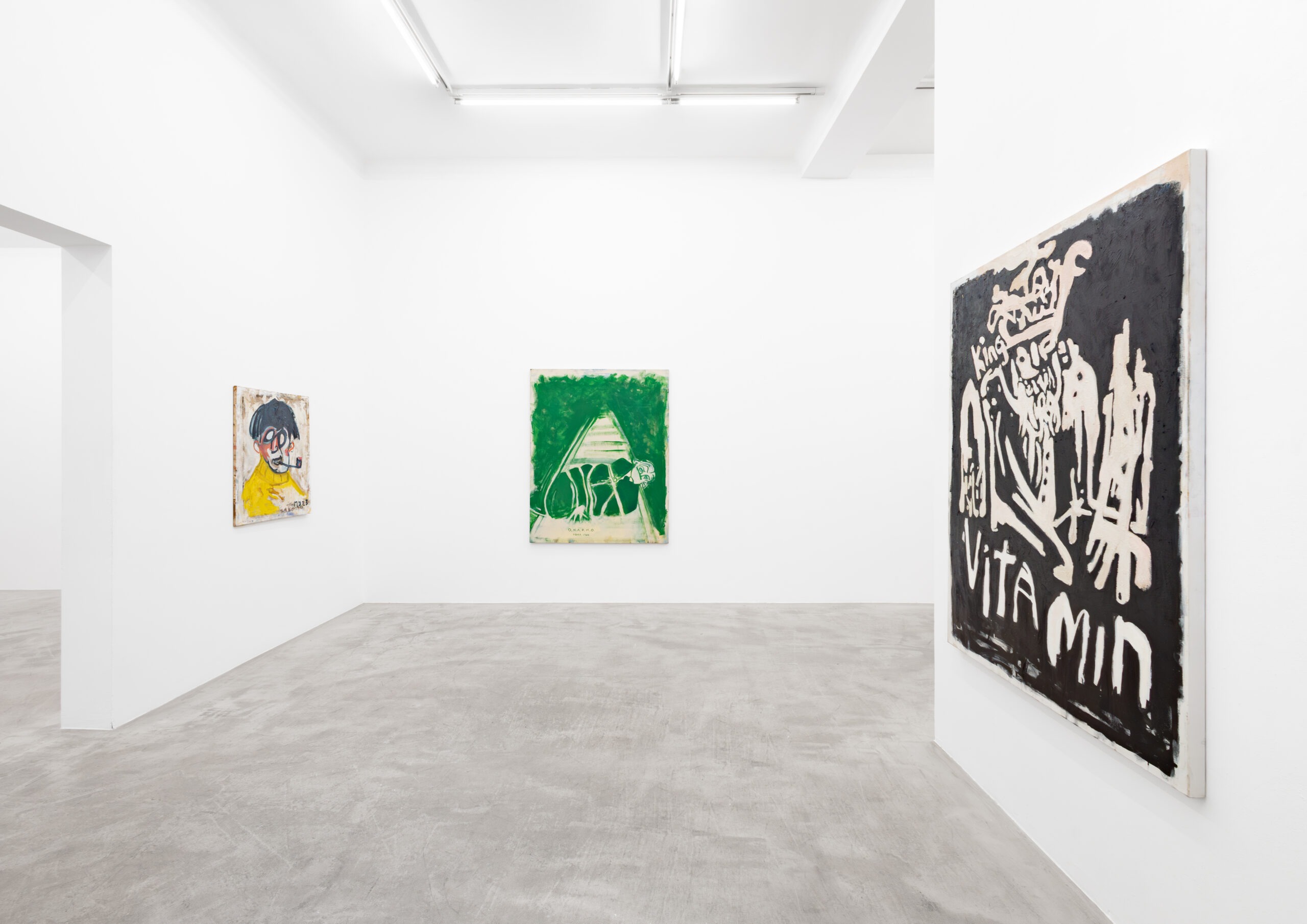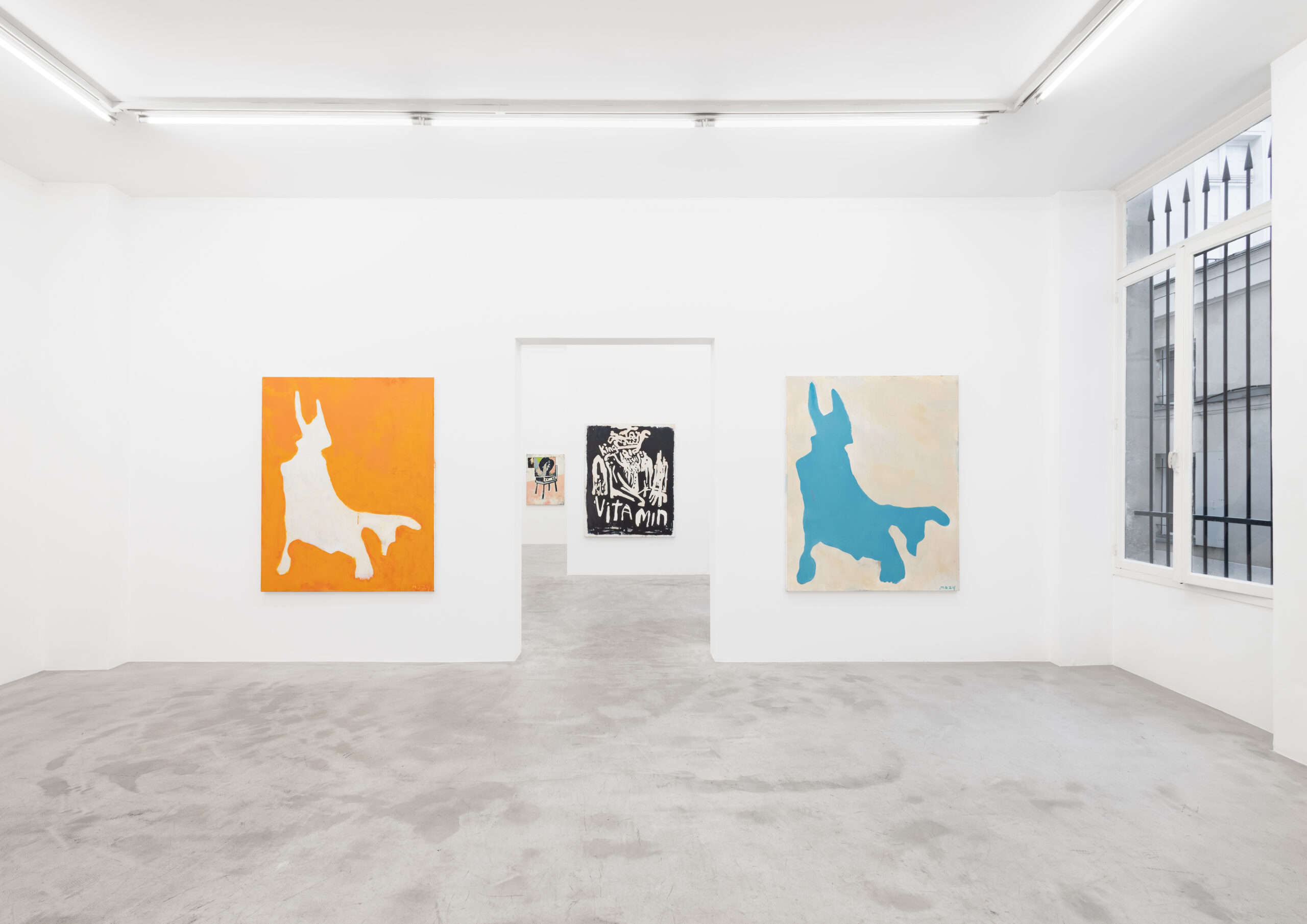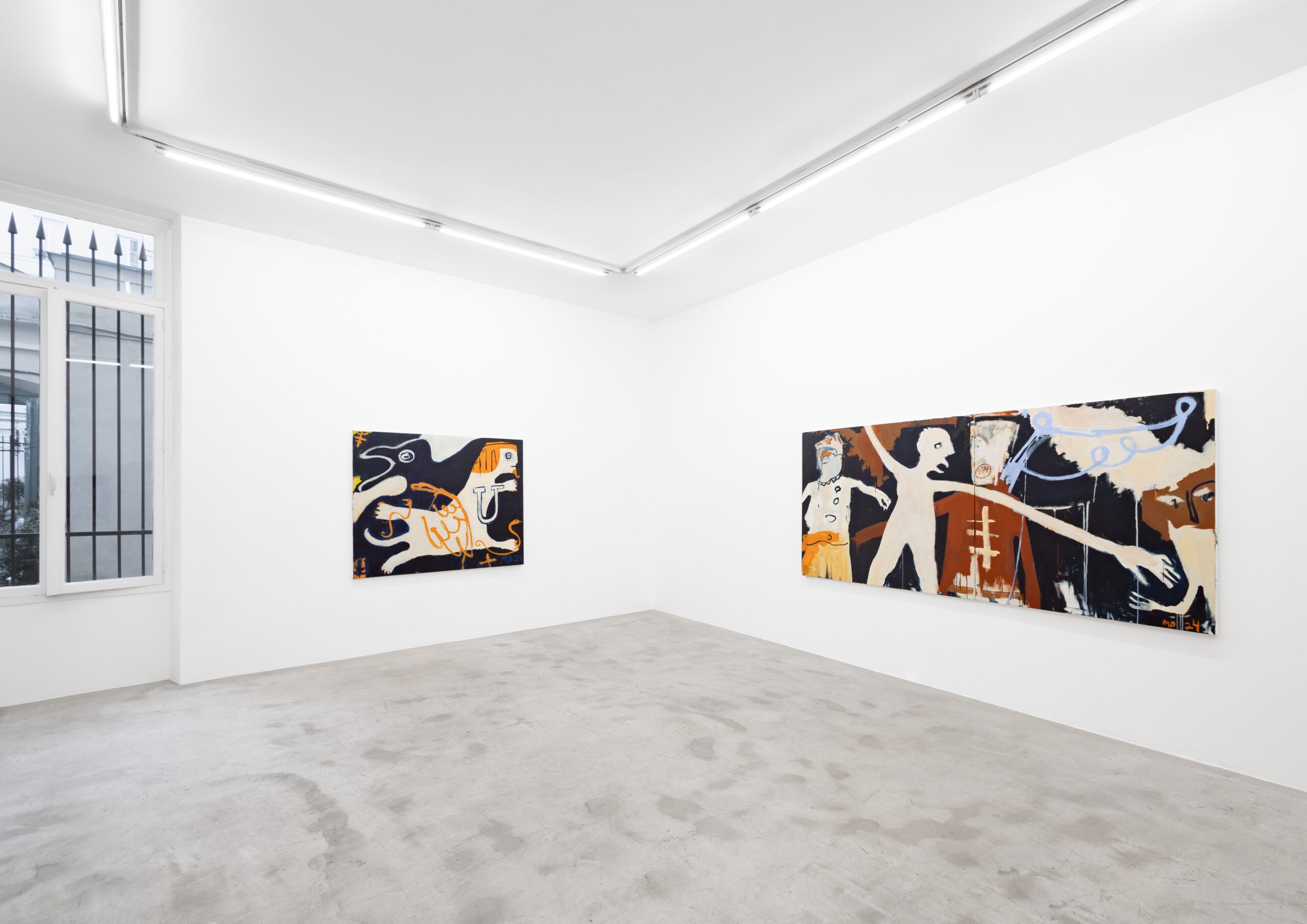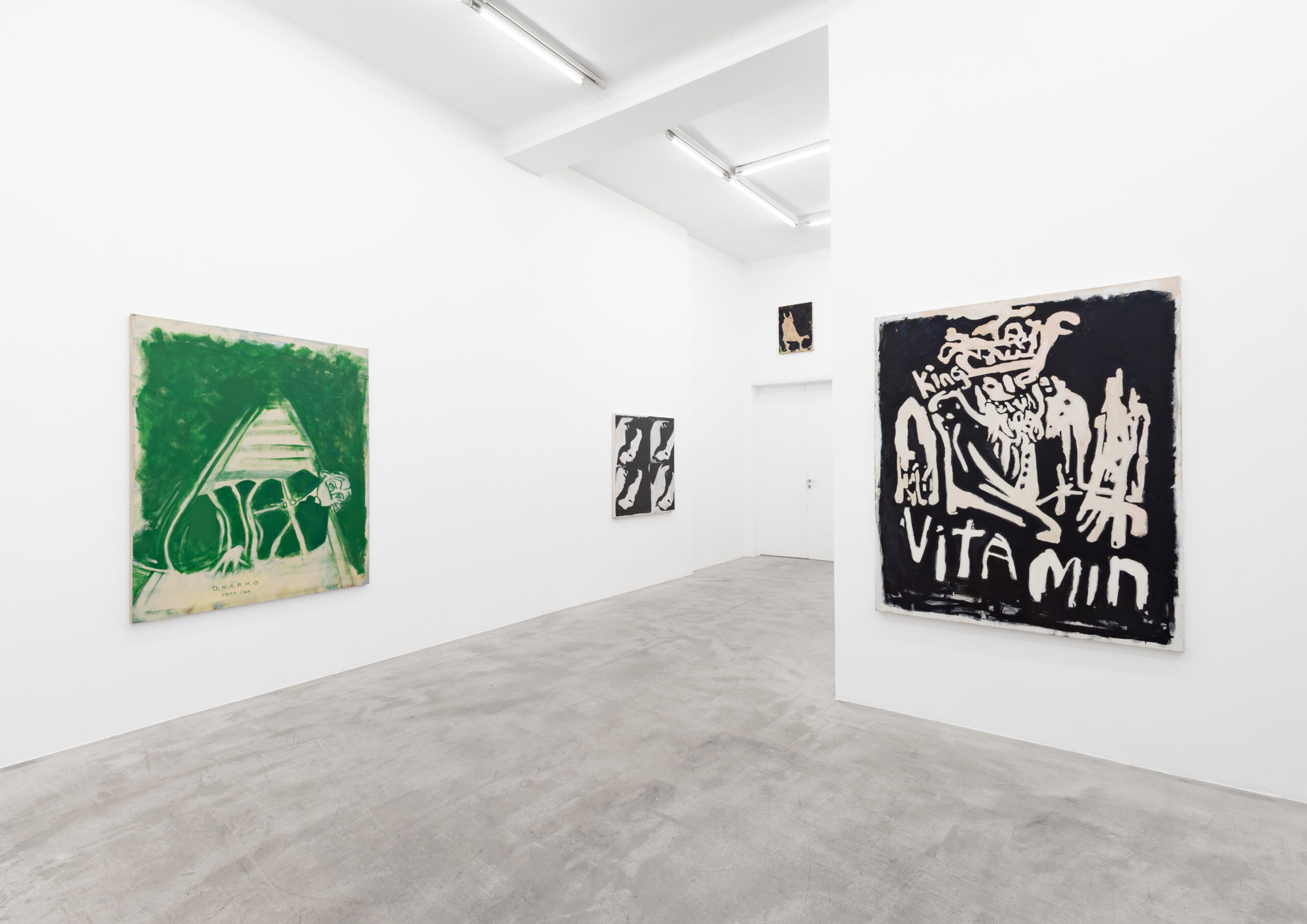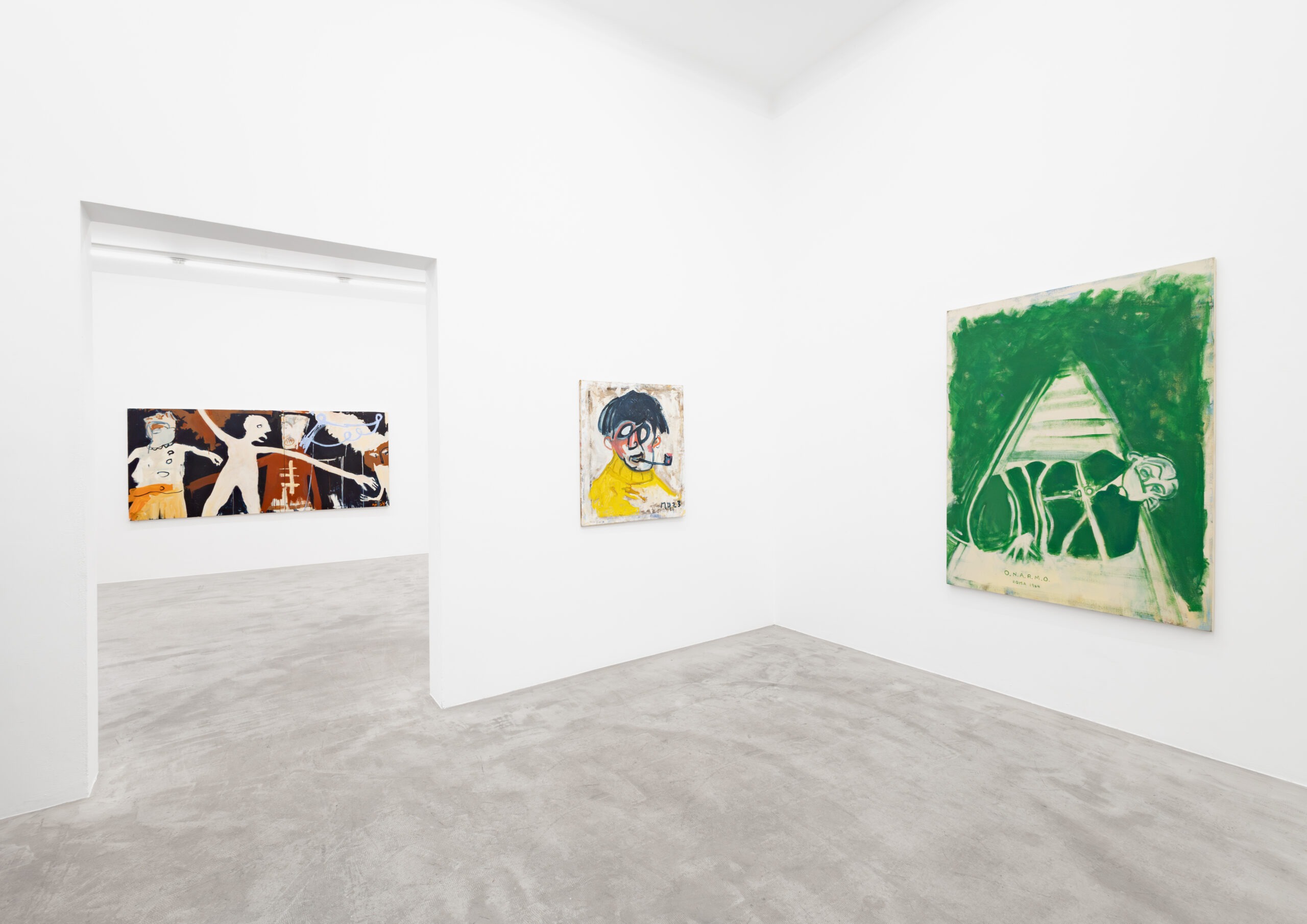Rascals and Saints Matt Dillon
Matt Dillon (b.1964 in New Rochelle, US) presents his first solo exhibition Rascals and Saints with Ruttkowski;68 in Paris.
Rascals and Saints reveals Matt Dillon’s interest in structured archetypes and masks, but also his deeper refusal to be typecast. Breaking the confinement of roles and definitions requires deception–a way to create the sudden ending of one thing to reveal the path of something else. Deception is a matter of knowing exactly what to do with that which can’t be known, which is also a way to describe painting. Referencing the roles of the rascal and the saint is its own kind of subterfuge. The rascal shrugs off commitments, shows up late, and stays out later. He is born out of the rabble, the rubble, and the mob. He’s learned the light step that is necessary to move within crowds; and knows the exits of each room he’s in. Opposite him is the saint, who is obligated to the suffering of the world, to order, and to balance. His is a destiny defined through sacrifice. They are shadows of each other–what each other chose to never be. What they have in common is that neither can look away. Both are their own paragons of unblinking responsibility. Their eyes are fixed ahead on what is rending the abyss.
Dillon and his paintings are both the rascal and the saint–and they are neither. The studio is his Vatican and pit; the attic where he sweats out shape. His impulse as a painter is to mark out the distinct edge of things and then relax it; to loosen what is taut and reform it into something more elastic; to undo each legible form until it can be something more versatile and open. Each change of silhouette shudders out Platonic mysteries; shaking out the deeper forms and the ways that things feel to us beyond their appearances. It is an acknowledgment of Dillon’s attraction and restlessness with staying put. The artist keeps his folded drawings and collages in a suitcase, always ready for a quick exit. They are the beat-up witnesses that give him the ability to glimpse the unseen; to see the moments of slow presence that require more understanding than there’s time for, between flights and hotels, or–as he often finds himself– waiting for the light to be right before there can be action. They are done without the privilege of permanence, and with a speed that communicates how rare the quiet moments are. Each sketch is scaled to the intimate shape and space of his hands–hands that trace the quick horizon in the ways that he learned from the artists of his family.
Texture is Dillon’s commitment that casts the rascal’s shoes in concrete. The painter shares affinity with Penck and enjoys the crud of other inelegant Germans that accumulated on stiff brushes and the creaking floorboards of their studios. Dillon expects a history to be kept within each surface that he paints, so that each movement is able to speak out of turn, play itself back, and reveal the other steps it could have taken. The final conclusion of the painting is always undermined by the relief of what’s been painted over, a trick of Kippenberger to make each official statement more of a discordant question. You’ll see the phantom textures of scenes that didn’t make it to the end–the shapes of windows and abandoned creatures that were eventually erased. Impasto is just a hair’s breadth from impostor, and it keeps the heckling voices of each painting that could-have-been present as a rabble chorus that undermines the saint.
But it isn’t just the history of each image he is interested in. Dillon uses graphic form to make vivid negative spaces like René Daniëls or Captain Beefheart were able to achieve. Like in Riddle of the Raven (2024), the Sphynx and the raven form each other within each other’s negative. They represent two forms of wisdom that Dillon makes of each other and their absence. A “u” could imply a university of these wisdoms–a knowledge of cunning and a knowledge of riddles. Each positive form flexes against the others outline– a silhouette of sacrifice– made with a slow brush that improvises within each long drag. Each change affects the shape of both, making it necessary to make and finish them together as one. Dillon’s attraction to hard shape echoes the alluring draw of the archetype, but also his suspicion of its limitation. He paints each shape like the soft erosion of a word through its repetition, that eventually makes it fragment into something unrecognizable. It is an intuitive and gestural reworking of the language of a flag or a heraldic announcement; or something more cinematic–like the dramatic silhouettes of early Babelsberg Expressionism or the shadowed title cards of a noir. They each begin with no plan drawn up, hoping that in striking out without a map that there will remain some ability to keep the multitude within us and perform the infinite in different roles.
Dillon lets the image of the painting stay emergent through his deeper suspicions of language and its inability to comprehend the world. His works are meant to be felt more than read, requiring something more versatile and unknowable than what either Melpomene or Thalia have in mind. King Vitamin is the twisted word–the secret keeper par excellence. He shows his hands as he steps out of shadow–coming in peace and offering good health. It might seem like you’re tasting sugar, but how could that be when it comes in the form of a nutrient? His name is a smokescreen–a marble-mouth of intention–Warren Beatty as the con McCabe. In The Caseworker (2024), there’s no getting to the bottom of the acronym O.N.A.R.M.O. Well there is, but it doesn’t reveal anything towards understanding the painting, as it is only the stamp of the company that produced the image of Peter Lorre on the tracks. It is an elegant misprision, something undisclosed yet purposeful and specific. In this painter’s work, language will only take you further away from what the viewer has to deal with–functioning in that way like the language of Godard. He isn’t painting to let anyone off the hook.
In The Exhibitionnaire (2024) the eyes are connected like two ellipses, a dark and infinite symbol held within the center of the face that looks unbounded out at us. It is a vortex of sight within the head of the explorer Tom Crean, whose only indulgence is a libidinal hanging pipe on his way to death and Antarctica. Here he is– looking back at what has always been following close behind. Dillon is the explorer who doesn’t blink–or he is stepping into the role of one–seeking what is gained when there is never a conclusion, and the honesty felt by what can never be known.
Text: Andrew Woolbright
